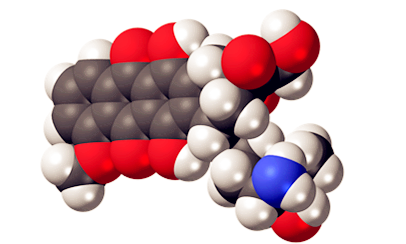“Body-on-a-chip” device screens human heart cells for drug toxicity
August 29, 2017
Source: drugdeliverybusiness
 811
811

A "body-on-a-chip" device that can evaluate the side-effects of drugs on human cells has been developed by researchers at Kyoto University's Institute for Integrated Cell-Material Sciences, according to a study published today in the Royal Society of Chemistry Advances.
The device was used to test the toxicity of doxorubicin, a cancer-killing drug, on human heart cells. The researchers found that although the drug wasn’t toxic to the cells, a metabolite of the drug was.
The "body-on-a-chip" device, which is smaller than a microscope slide, has six small chambers that are connected by microchannels with a series of inlets and valves. A pump controls the movement of fluid through the channels. Every two chambers and their microchannel system makes up one test bed, the team reported.
The researchers tested doxorubicin’s effects on healthy heart cells and liver cancer cells cultured separately in small wells. The drug acted as expected with the cancer cells and did not cause damage to the heart cells.
Then, the team ran the same test using their device, with heart cells in one chamber and liver cancer cells in the other chamber. The researchers introduced doxorubicin into a cell culture circulating through a system of microchannels that connected the two chambers, allowing the drug to flow in one direction in a loop through both chambers.
They observed that the drug produced toxic side effects in both heart and cancer cells. On a hunch that a metabolic byproduct of doxorubicin, doxorubicinol, was producing the toxic effect, they added it to heart cells and liver cancer cells separately.
The doxorubicinol was toxic to the heart cells but not to the cancer cells.
When doxorubicin was added to the team’s device, the metabolite was not diluted while moving through the microchannel circulation system since a smaller volume of cell culture was needed compared to their first experiment, the team reported. This created the drug’s toxic side effect.
The study is demonstrative of how the device could be used to investigate a drug’s potential side effects before launching expensive clinical trials, according to the researchers.
By Ddu
Read more on
- Things to Know before Buying Newborn Baby Incubators March 31, 2022
- Highly Resistant Food Poisoning Bug Responds to Antibiotics September 6, 2018
- Smartphone Based Diagnosis to Identify Mosquitoes Transmitting Infection September 5, 2018
- 3 Natural Plant Extracts Manufacturers on Drugdu.com September 4, 2018
- Shenzhen Chuanggan – Health Assessment Facility Supplier September 4, 2018
your submission has already been received.
OK
Subscribe
Please enter a valid Email address!
Submit
The most relevant industry news & insight will be sent to you every two weeks.



